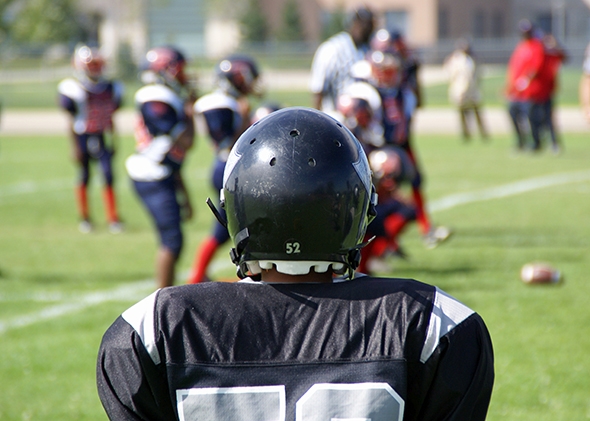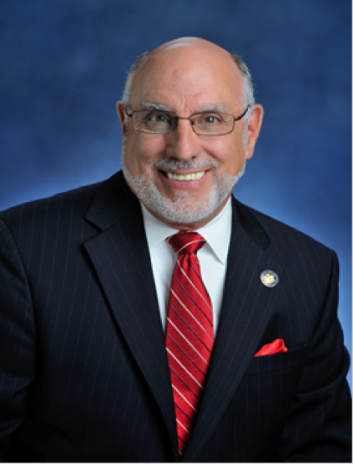
Playing Youth Football and the Need to Protect Our Children

I used to work with a lady whose son played on a local high school football team.
Every Monday I would listen to a narration about the most recent gridiron exploits of her son, who had been playing organized tackle football since he was eight. He was a running back and part-time quarterback who excelled at the sport and would, in all likelihood, go to college on a free ride with a football scholarship. You could see the pride she had in her son, a bright, articulate, handsome young man, in every word of those Monday afternoon narratives.

I left my job when I was elected to the New York State Assembly in 2004 and lost touch with her until about six years later when I bumped into her on the street. She proceeded to update me on the developments with her son; he did get his college scholarship, however, soon after entering college he began to experience some of the classic symptoms of a brain injury: headache, fatigue, irritability, impaired memory, poor concentration, depression, low tolerance for noise and light.[1] Years of playing football from pee-wee leagues through high school had taken its toll. Years of receiving blows to the head from opposing players and falls to the ground (hundreds of sub-concussive blows) which were overlooked as being ‘just part of the game’ led to the end of his football and college career. He eventually dropped out of college never to return.
After listening to this sad story I decided to get a better understanding of what a concussion is and how they happen. A concussion is “any change to the mental status such as confusion, disorientation headache or dizziness following a hit or jolt….A concussion …does not require loss of consciousness or even a bump on the head.” [2] A concussion can occur without any contact with the head. It can happen when a person’s body receives a jolt that causes his shoulders and head to change speed or direction in a violent manner. We would understand it better as a whiplash effect.[3] Estimates by the Centers for Disease Control and Prevention (CDC) range from 1.6 million to 3.8 million sports-related concussions in the United States annually. Thus, the question presented itself: what are we doing to properly protect our children from possible brain injury due to concussions and other sub-concussive blows?
In 2010 in New York State there were no regulations addressing what a school should do when a student receives a severe blow to the head let alone a concussion. Students injured in a game would quite often ‘shake it off’ and return to the game if he/she was even taken out in the first place. This eventually led to passage of the 2011 Concussion Management and Awareness Act, of which I was a prime sponsor, which established the first statewide guidelines on dealing with school-related sports concussions and sub-concussive blows.[4]
I was a proud sponsor of the law but I would soon realize that there was more to do.
While riding in my car one fall morning in 2012 I heard a radio discussion on sports concussions and the work being done by Dr. Robert Cantu, a senior advisor to the National Football League’s Head, Neck, and Spine Committee, as well as co-director of Boston University’s Center for the Study of Traumatic Encephalopathy.
Dr. Cantu, as I am, is a strong supporter of youth sports and all the benefits that they can provide a young athlete. However, he cautions about the risks they present, the danger of concussions and, just as important, sub-concussive blows to the young. These shocks to a child’s head may cause severe damage to their brain at a time when that brain is not fully developed and most open to being injured. As Dr. Cantu explains,
“Myelin is the fat that covers the fiber tracts in the brain….[It} insulates, protects, and strengthens….protecting the fibers from injury or insult. Brain trauma still can occur, of course. But myelination is an excellent defense. Children’s brains have less myelin, so structures in their brains are more easily damaged.”[5]
Furthermore, Dr. Cantu points out that a child’s head is disproportionally large in comparison to the rest of their body. As the doctor relates,
“The extra size and weight, coupled with a child’s weaker neck, mean that the child can’t brace for a hit the way an adult does. Rotational forces will be greater for a child, proportional to the severity of the hit. The hit itself may not generate the same force because of the speed of the collision and the weights of the (junior) players involved, but what is transferred to the head may be as great or greater.”[6]
Finally, Dr. Cantu recommends that the playing of tackle football in children 14 years and younger be stopped because of the potential damage that may be occurring to their under-defended and underdeveloped brains.
After more research on the topic and dwelling long and hard on the matter, I introduced a bill in January 2012 which would prohibit the playing of organized tackle football in New York State for children 14 years and younger.
My decision was not an easy one but after reading countless stories of former professional football players who suffered the negative effects of concussions and sub-concussive blows they received while playing the game and hearing of stories like similar to that of my friends’ son, I believe I made the correct decision.
Chronic Traumatic Encephalopathy (CTE) is a progressive degenerative disease of the brain found in people exposed over many years to repetitive brain trauma.[7] The disease will cause one or more of the usual symptoms of brain injury as I mentioned earlier. These symptoms can lead to aggression, rage, depression, withdrawal and, all too often, the ruination of lives.
At the Boston University School of Medicine Center for the Study of Traumatic Encephalopathy, where they study brains of deceased athletes, they have found that CTE is present in virtually all of the diagnosed brains in their collection (the largest collection of such brains in the world). As the definition states, it is a progressive disease: the damage to the brain doesn’t suddenly appear, but develops over time and is caused by repeated blows to the head.
I came to believe that when children begin playing contact sports at too young of an age, when their bodies are not better prepared to withstand and protect against these hits to their head, they are increasing their risk of long-lasting, life altering brain damage.
But here’s the problem: We don’t know this for sure. There are very limited studies of the damage being done to young brains in this age group from the effects of continuous blows to the head. And since we currently cannot look inside their skulls to take a peek at what is happening to their brain development, we can only guess.
We do know what happens to many high school and college athletes. A recent report by the National Academy of Sciences found that football has the highest rates of concussions at the interscholastic level. It also found that 10 to 20 percent of concussion sufferers still experience symptoms anywhere from weeks to months to years after their initial injury.[8] Besides the physical problems these players are facing from hits, we must also realize that there are educational consequences, as well as tragic events such as the deaths of three high school football players within a 10-day period in late September and early October this year— all three died after receiving hits to the head during play.[9]
Why would we not believe that this progressive disease begins with the continuous pounding taken by our youth who participate in the most popular contact sport? Football, where the object on every play is to hit your opponent hard and bring them to the ground? Where our children play in leagues that often have too many scheduled games, where contact practices are held too often and run for too long? Imagine the pounding their brains take.
We don’t know for sure that youth football is hurting our children. But all the evidence is pointing that way, so isn’t it a good idea to err on the side of caution?
Needless to say, my bill was met with much rage and charges of a “nanny-government” overstepping its bounds into what should be the parents’ responsibility. I understand the concerns, but we demand by law that drivers wear seatbelts in cars, and that children must wear helmets when riding their bikes. Isn’t it the proper role of government to protect its citizens in these cases? Why should it be any different when it comes to sports, especially when it concerns our children?
[1] Traumatic Brain Injury, the first steps; Brain Injury Association of New York State; pg. 11, 2008
[2] The Concussion Crisis, Anatomy of a Silent Epidemic; Carroll, Linda and Rosner, David. Simon and Schuster, pgs. 10-11, 2011
[3] Concussions and Our Kids; Cantu, Robert, M.D., Houghton Mifflin Harcourt Publishing Company, pg. 4, 2012
[4] Guidelines for Concussion Management in the School Setting; University of the State of New York, the State Education Department, Office of Student Support Services, Albany, NY 12234, June 2012
[5] Concussions and Our Kids; Cantu, Robert, M.D., Houghton Mifflin Harcourt Publishing Company, pg. 12, 2012
To explore more on the debate about youth football click here.